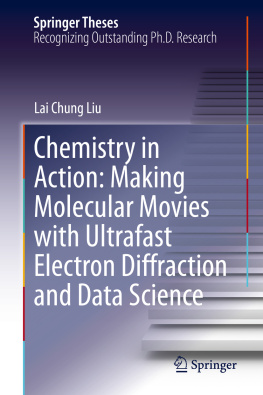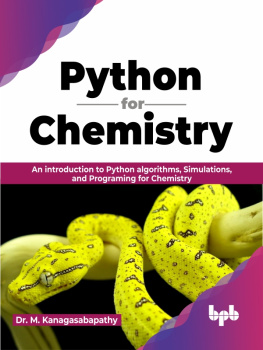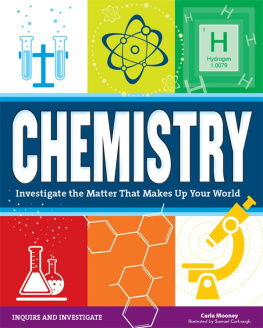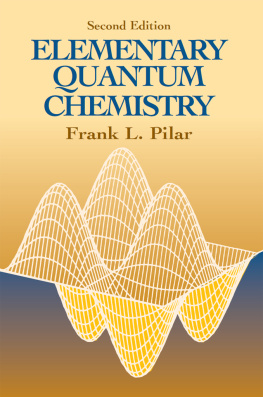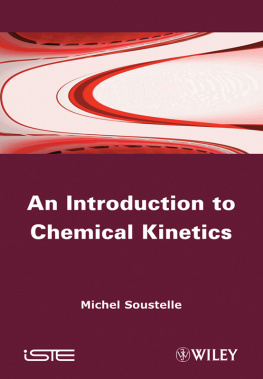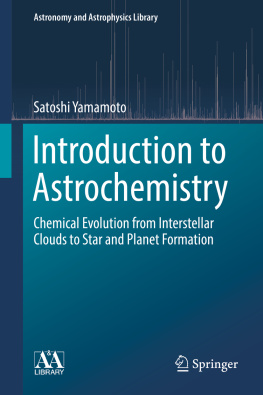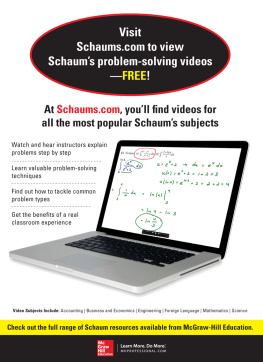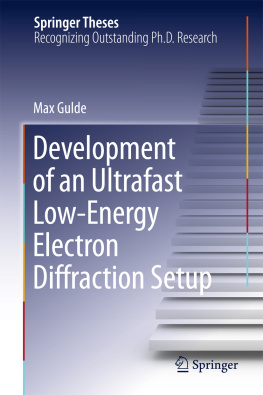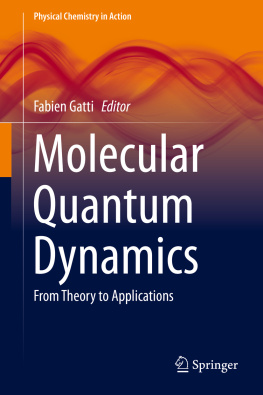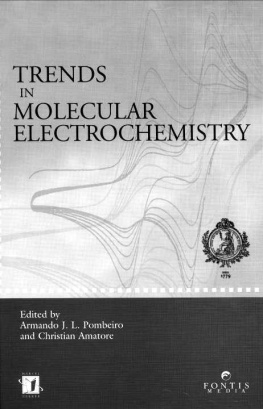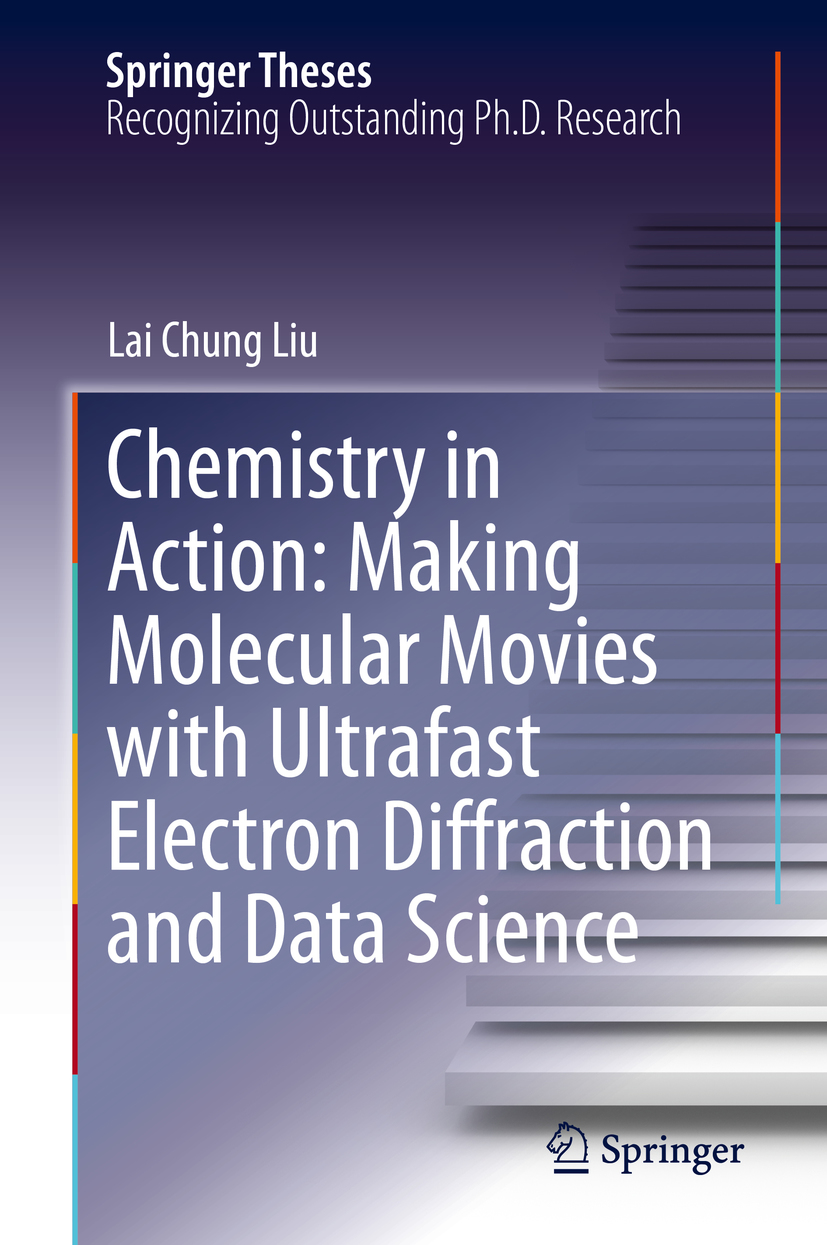Springer Theses Recognizing Outstanding Ph.D. Research
Aims and Scope
The series Springer Theses brings together a selection of the very best Ph.D. theses from around the world and across the physical sciences. Nominated and endorsed by two recognized specialists, each published volume has been selected for its scientific excellence and the high impact of its contents for the pertinent field of research. For greater accessibility to non-specialists, the published versions include an extended introduction, as well as a foreword by the students supervisor explaining the special relevance of the work for the field. As a whole, the series will provide a valuable resource both for newcomers to the research fields described, and for other scientists seeking detailed background information on special questions. Finally, it provides an accredited documentation of the valuable contributions made by todays younger generation of scientists.
Theses are accepted into the series by invited nomination only and must fulfill all of the following criteria
They must be written in good English.
The topic should fall within the confines of Chemistry, Physics, Earth Sciences, Engineering and related interdisciplinary fields such as Materials, Nanoscience, Chemical Engineering, Complex Systems and Biophysics.
The work reported in the thesis must represent a significant scientific advance.
If the thesis includes previously published material, permission to reproduce this must be gained from the respective copyright holder.
They must have been examined and passed during the 12 months prior to nomination.
Each thesis should include a foreword by the supervisor outlining the significance of its content.
The theses should have a clearly defined structure including an introduction accessible to scientists not expert in that particular field.
More information about this series at http://www.springer.com/series/8790
Lai Chung Liu
Chemistry in Action: Making Molecular Movies with Ultrafast Electron Diffraction and Data Science
1st ed. 2020
Lai Chung Liu
University of Toronto, Toronto, ON, Canada
ISSN 2190-5053 e-ISSN 2190-5061
Springer Theses
ISBN 978-3-030-54850-6 e-ISBN 978-3-030-54851-3
https://doi.org/10.1007/978-3-030-54851-3
Springer Nature Switzerland AG 2020
This work is subject to copyright. All rights are reserved by the Publisher, whether the whole or part of the material is concerned, specifically the rights of translation, reprinting, reuse of illustrations, recitation, broadcasting, reproduction on microfilms or in any other physical way, and transmission or information storage and retrieval, electronic adaptation, computer software, or by similar or dissimilar methodology now known or hereafter developed.
The use of general descriptive names, registered names, trademarks, service marks, etc. in this publication does not imply, even in the absence of a specific statement, that such names are exempt from the relevant protective laws and regulations and therefore free for general use.
The publisher, the authors and the editors are safe to assume that the advice and information in this book are believed to be true and accurate at the date of publication. Neither the publisher nor the authors or the editors give a warranty, expressed or implied, with respect to the material contained herein or for any errors or omissions that may have been made. The publisher remains neutral with regard to jurisdictional claims in published maps and institutional affiliations.
This Springer imprint is published by the registered company Springer Nature Switzerland AG
The registered company address is: Gewerbestrasse 11, 6330 Cham, Switzerland
Supervisors Foreword
Because as we know,
there are known knowns;
there are things
we know we know.
We also know
there are known unknowns;
that is to say we know
there are some things we do not know.
But there are also unknown unknowns:
the ones we dont know we dont know.
Donald H. Rumsfeld
United States Secretary of Defense (20012006)
Department of Defense News Briefing, February 12, 2002
I am very pleased to give some insight into the importance of the PhD work of Dr. Lai Chung (Nelson) Liu as part of its selection to be published as a Springer book. To put his work in context, I think it is fair to say that one of the dream experiments in science has been to directly observe atomic motions during the primary events governing chemistry and biology. Given the extremely high and simultaneous requirement of sub- and 100 femtosecond (fs, 1 fs = 1015 s) space-time resolution, this prospect seemed to be destined to remain as the purest form of a thought experiment. The major technical obstacle was really source brightness. As with any movie camera, as one goes to shorter and shorter exposure times, one needs a brighter and brighter light source to resolve the image of interest in motion. We solved the space charge problem associated with electron sources (effects of Coulomb repulsion) to generate sources operating at the absolute limit of source brightness before the onset of space charge aberrations in either spatial or temporal resolution. These sources are sufficiently bright to literally light up atomic motions. We increased our electron source brightness with respect to spatial coherence to deliberately study how chemistry scales with complexity. How can so many possible degrees of freedom be directed to a given product state? As discussed in Nelsons PhD thesis, we systematically studied systems involved in ring-closing reactions with conserved stereochemistry (bond formation), to bond breaking events, to electron transfer reactions, and spin transitions of increasing complexity. The surprise was that, for all these systems, effectively independent of complexity, the structural transition reduced to <10 key reaction modes out of thousands of possible correlations. We can now see that these motions simply map onto changes in electron density that spatially confine the anharmonicity in the many-body potential to direct the motion. We would have never had this insight without Nelsons work. He developed a sampling method based on the Pearson correlation to find the key modes by brute force. There was always the question of completeness. He then went on to develop a method using singular value decomposition to apply principal component analysis to the diffraction data directly to cast out the motions in an unbiased determination. He is basically responsible for the workflow in analyzing the femtosecond time-resolved diffraction data that led to the discovery of the simple physics giving rise to the observed key reaction modes. We would not have had this insight without his work.
I would like to give you one anecdotal story of Nelsons contribution to unearthing a new conceptual basis for chemistry. We had often talked about the prospect of reaction dynamics distilling down to a few key reaction coordinates. This idea was not new. Theoreticians use this concept to make time-dependent ab initio calculations of reactive trajectories tractable. However were there really only a few modes and were the assumptions made about these modes rigorous? There were typically based on ad hoc assumptions or chemical intuition. At the time, I was a co-founding director of a new Max Planck Institute in Hamburg Germany, but I had still kept my group in Toronto with the intent to return, which I now have. I was traveling back and forth between Toronto and Hamburg as I built up the research program in Hamburg. Upon returning to Toronto on one trip back in 2013, Nelson informed me that I was going to love what he found. He developed a sampling method to construct a huge number of potential trajectories involved in electron-transfer reactions we were studying at the time. He then calculated the expected diffraction pattern and analyzed the deviations from the experimental results using a Pearson correlation analysis. He found that this 100+ dimensional problem reduced down to just three key modes. It was truly amazing to see. The slowest, most anharmonic motion was actually slaving the other two nuclear projections. This observation led to an obvious control (changing the effective mass of this coordinate by substitution) that served to prove this assignment and the overall physical principle. This work really clarified a lot of our results and paved the way for proposing a new conceptual basis for chemistry based on reduced reaction modes that unifies structure and dynamics.

